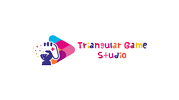The Future of Data Science: Revolution of AI
Share :
The world of data science has evolved rapidly over the past decade, and the pace of change shows no signs of slowing down. From analyzing consumer behavior to predicting health outcomes, data science is influencing nearly every sector, transforming businesses, and shaping the way we live. But as we look ahead, what’s next for the industry? What trends should aspiring data scientists be preparing for in the coming years?
In this blog post, we’ll explore some of the key developments that are expected to define the future of data science course in surat and what this means for professionals entering the field.
1. The Development of Machine Learning and AI rapidly
One of the most significant trends in data science is the growing integration of artificial intelligence (AI) and machine learning (ML). These technologies are transforming traditional data analysis methods, enabling systems to not just interpret data, but also learn from it, make predictions, and automate decisions.
For example, businesses are increasingly using machine learning algorithms to improve customer experiences by personalizing recommendations, detecting fraud, and forecasting market trends. In healthcare, AI is helping doctors diagnose diseases and predict patient outcomes more accurately than ever before.
As a data scientist, it’s crucial to gain proficiency in AI and ML techniques. Understanding how to build and train models, work with large datasets, and fine-tune algorithms will be essential as the demand for AI-driven solutions continues to grow.
2. Automation of Data Science Workflows
Another trend we’re seeing is the automation of certain tasks within the data science workflow. While data scientists will always need to interpret results, design algorithms, and communicate insights, automated machine learning (AutoML) tools are making it easier for non-experts to build and deploy models.
For example, platforms like Google AutoML and H2O.ai are simplifying tasks like feature selection, model selection, and hyperparameter tuning, which traditionally required deep expertise in data science. This trend will likely make data science more accessible to a broader audience, enabling businesses to leverage data-driven insights without requiring full-time data science and data analytics teams.
However, while automation can streamline some processes, the creative and critical thinking required to design effective models and interpret complex datasets will remain in demand. Data scientists will need to stay ahead of the curve by learning data science course in surat understand how to use and integrate automation tools while retaining the ability to innovate.
3. The Explosion of Big Data
We are living in a time of big data, where organizations are collecting vast amounts of information every second, from social media interactions to IoT sensors. The ability to harness and analyze this data to drive business decisions is more important than ever.
Big data's continuous expansion will be greatly aided by the Internet of Things (IoT). The amount of data created will continue to grow tremendously as more gadgets are connected. This requires data scientists to become adept at handling and processing large, unstructured datasets. Mastering distributed computing frameworks like Apache Spark and Hadoop will be increasingly important.
however, with the rise of big data, there will be a greater emphasis on data quality and data governance. Ensuring the integrity, accuracy, and ethical use of data will become a critical responsibility for data scientists, especially in industries like finance, healthcare, and government learn Data Sceince course in surat.
4. Data Science for Social Good
Data science isn’t just about profits; it’s also about making a positive impact on society. In the coming years, we can expect to see more initiatives that use data to tackle global challenges such as climate change, poverty, and public health.
Organizations and governments are already using data science to predict and mitigate the effects of climate change, optimize resource distribution in times of crisis, and improve public health responses. Data science is playing a key role in building smarter cities, reducing traffic congestion, improving education, and addressing income inequality.
This shift toward data-driven social good presents an exciting opportunity for aspiring data scientists to work on projects that not only have the potential for innovation but also contribute to meaningful social change by learning Data Science course in surat.
5. Ethics in Data Science: A Growing Focus
Data ethics in data science will become even more crucial as data science continues to pervade every part of our life. Issues such as data privacy, algorithmic bias, and transparency are coming under closer scrutiny. Data scientists will play a pivotal role in ensuring that algorithms and models are developed in a way that is fair, transparent, and responsible.
The ethical use of data is already a major concern in industries such as finance, healthcare, and law enforcement, where biased algorithms could lead to unfair outcomes. As a result, data science course in surat are beginning to incorporate ethics training to prepare students for these challenges. Understanding the societal implications of data science will become just as important as technical expertise in the future.
6. Cooperation Between Domain Experts and Data Scientists
The future of data science isn’t just about technical skills; it’s also about collaboration. In the coming years, we will likely see a greater emphasis on interdisciplinary teams that combine data scientists with domain experts. While data scientists bring technical expertise to the table, domain experts provide the contextual knowledge needed to ensure that data insights are applied effectively.
For instance, a data scientist working in healthcare may collaborate with doctors and medical researchers to build predictive models that improve patient outcomes. In the finance industry, data scientists will work alongside financial analysts to develop risk models that better predict market behavior.
The ability to communicate complex technical concepts to non-technical stakeholders will be a valuable skill in this increasingly collaborative environment by learning data science course in surat.
Getting Ready for Data Science's Future
The future of data science is bright, but it’s also rapidly changing. To stay relevant in this dynamic field, data scientists will need to continue learning and adapting data science coure in surat. Key areas to focus on include AI/ML, automation tools, big data processing, ethical considerations, and cross-industry collaboration.
By staying on top of these trends, aspiring data scientists can ensure they are prepared for the challenges and opportunities that lie ahead. Whether you’re just starting your career or are looking to level up your skills learn data science course in surat, embracing these developments will help you remain at the forefront of this exciting, fast-paced industry.
If you're interested in starting or advancing your data science career, our Data Science Course in Surat offers hands-on training with the latest tools and techniques. Explore the future of data science,data analytics, python programming with Creative Design & Multimedia Institute, and equip yourself with the knowledge you need to thrive in tomorrow’s data-driven world.







































































































































































































































































































(0) Comments
Write a comment